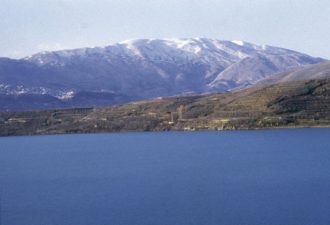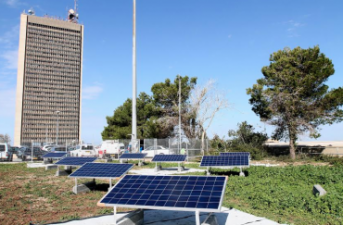 Prof. Colin Price suggests link between volcanic ash, cloud formation and global weather patterns.
Prof. Colin Price suggests link between volcanic ash, cloud formation and global weather patterns.
Native Americans used smoke signals to indicate danger, and a white plume is sent up by the Vatican when a new Pope is chosen. A new research project by Tel Aviv University and Weizmann Institute researchers has shown that where there’s “smoke” there may be significant consequences for local weather patterns, rainfall and thunderstorms. While the research was done on the smoke emitted from slash and burn forests in the Amazon, the implications of the research may tell us a whole lot about how volcanic ash (you know, the volcano disrupting flights around the world) could influence our climate.
In the study, Prof. Colin Price from Tel Aviv University looked at data on lightning the Amazon to see how cloud coverage and behaviour can be affected by particulate matter emitted from forest fires. Recently published in the journal Geophysical Research Letters, the researchers say this work could be used by climate change researchers looking to understand the impact of pollution on global weather patterns.
With colleagues, Prof. Price demonstrated how pollution’s effects on cloud development could negatively impact our environment. Low levels of particulate matter may in fact help the development of thunderstorms, but the reverse is true once a certain concentration is reached — particles seem to inhibit the formation of clouds and thunderstorms.
“The clouds just dry up,” he says.
Scientists have known for some time that man-made aerosols affect cloud formation, but specific scientific findings have been inconclusive. And how man-made pollution impacts clouds, rainfall and weather patterns remains poorly understood. Natural particulates, such as those generated by Iceland’s recent volcano eruptions may add to this effect. The thick volcanic ash cloud absorbs solar radiation, heating the upper atmosphere, similar to the forest fire smoke, and can hence also impact the development of clouds and rainfall, Price said.
The results may have significant implications for polluted regions of the world that rely on rainfall for agriculture and human consumption. “One of the most debated topics related to future climate change is what will happen to clouds, and rainfall, if the earth warms up,” says Prof. Price, “and how will clouds react to more air pollution in the atmosphere?”
Clouds deflect the sun’s rays, cooling the Earth’s climate. If we change the duration of cloud cover, the aerial coverage of clouds, or the brightness of clouds, we can significantly impact the climate, Prof. Price and his colleagues explain. And too many aerosols may have disastrous impacts on rainfall patterns as well.
Air pollution from car exhausts and smokestacks at power plants and factories contribute to increasing particulate matter in our atmosphere – as does volcanic ash – we are learning.
This is the first study of its kind that uses lightning as a quantitative way to measure the impact of air pollution on cloud development over a large area, and across a number of years.
Read more climate change research by Prof. Colin Price:
Counting on Lightning to Predict Hurricane Intensity
The Flash Before the Flood Can Save Lives
Lightning in Africa Takes the Pulse of the Sun



